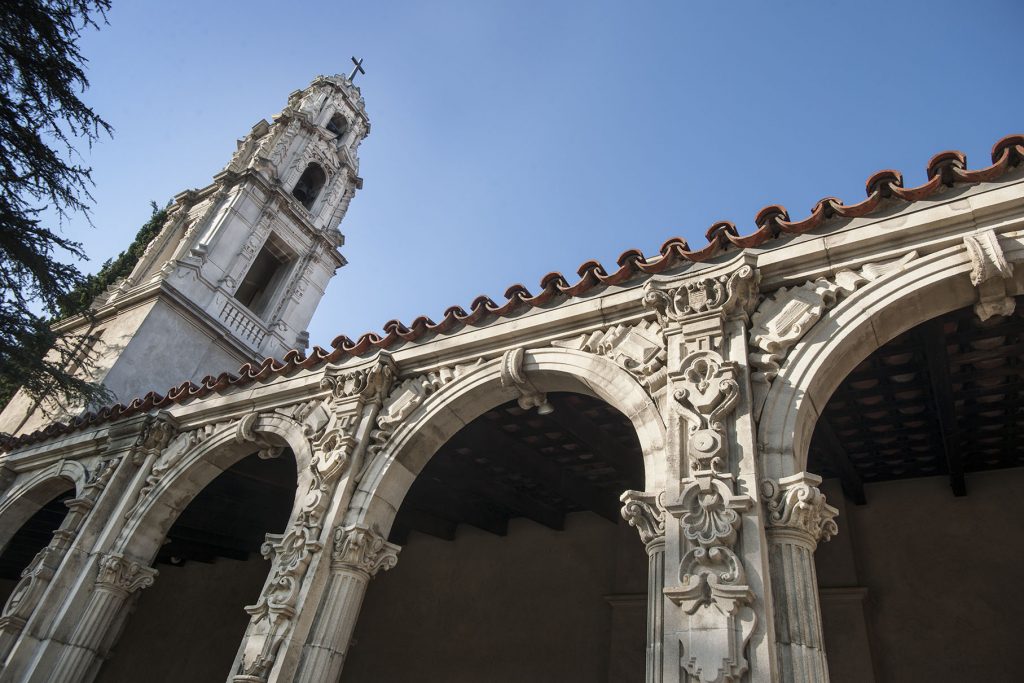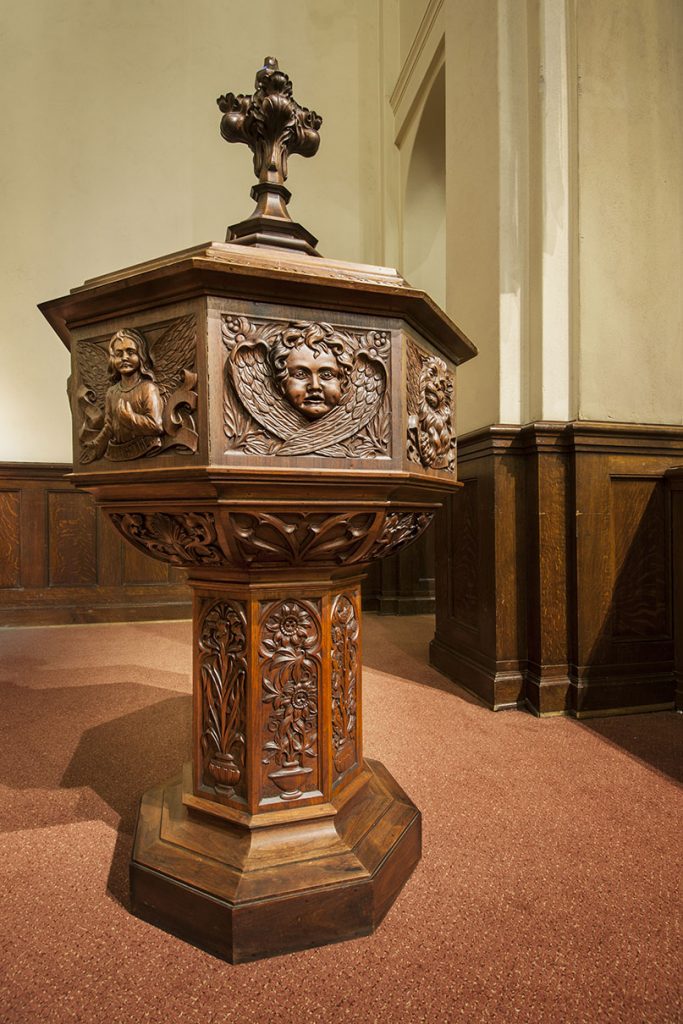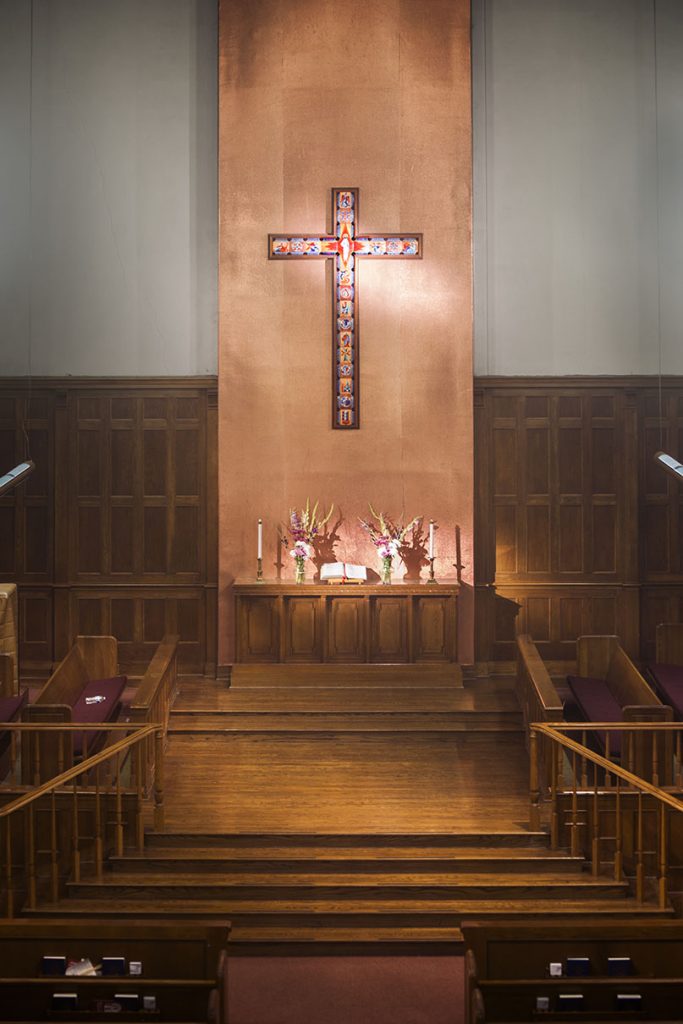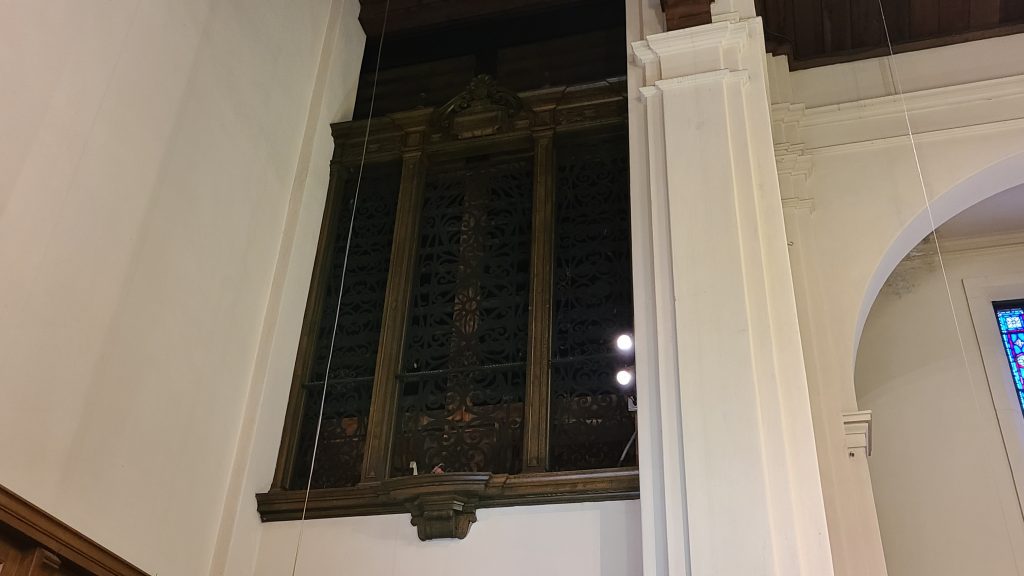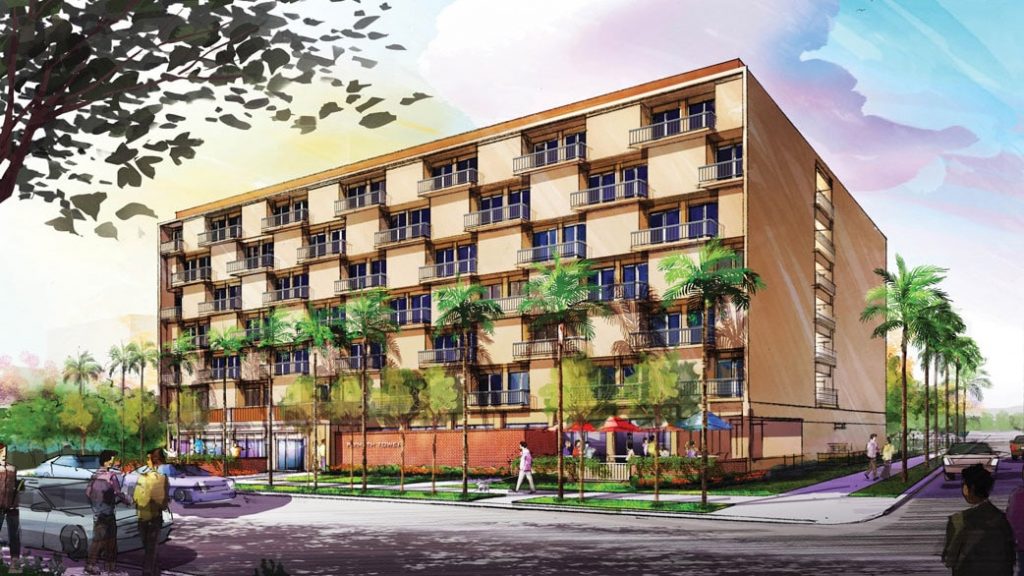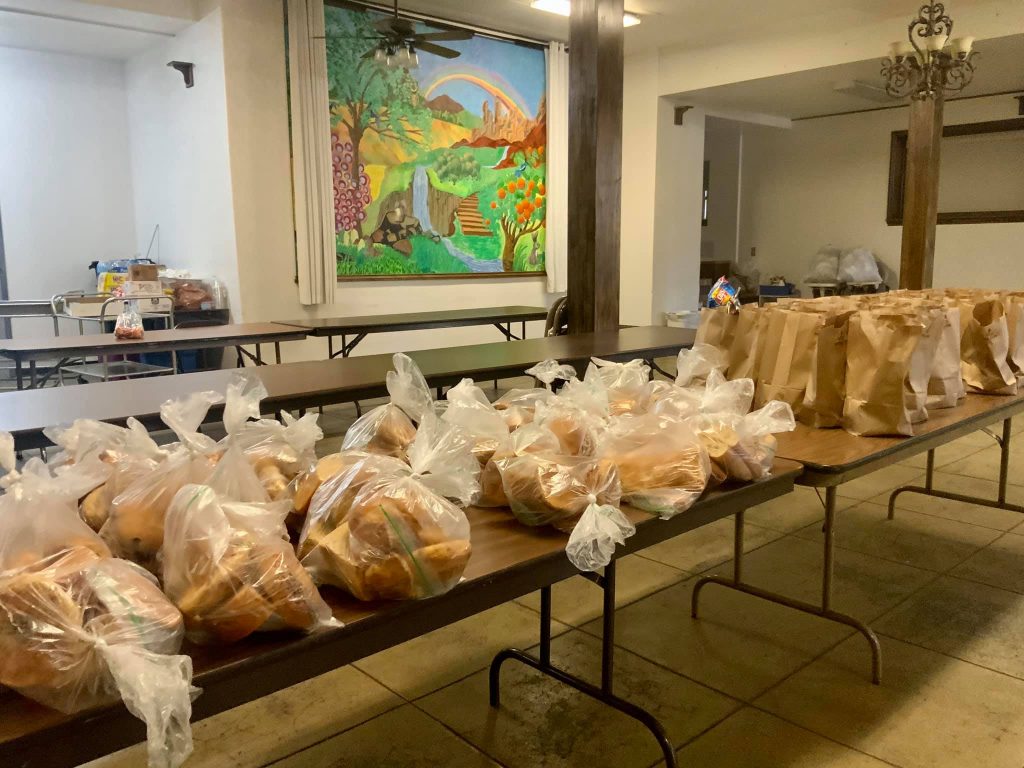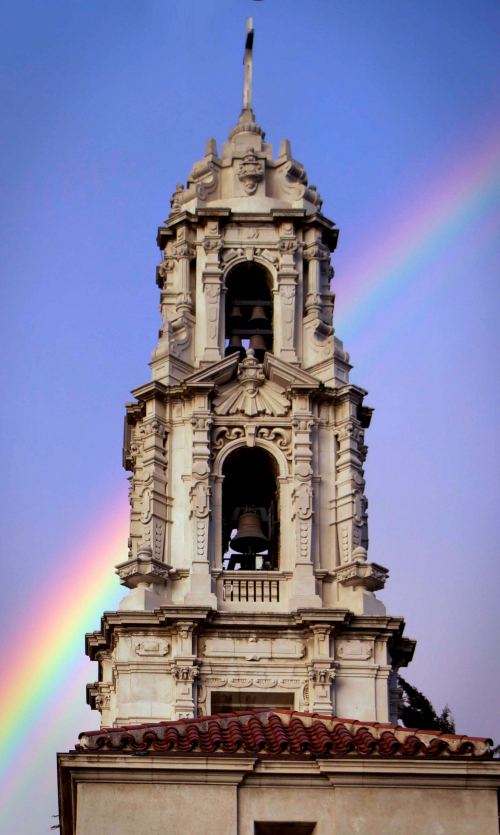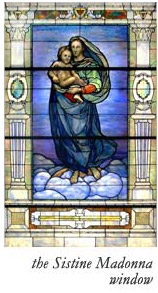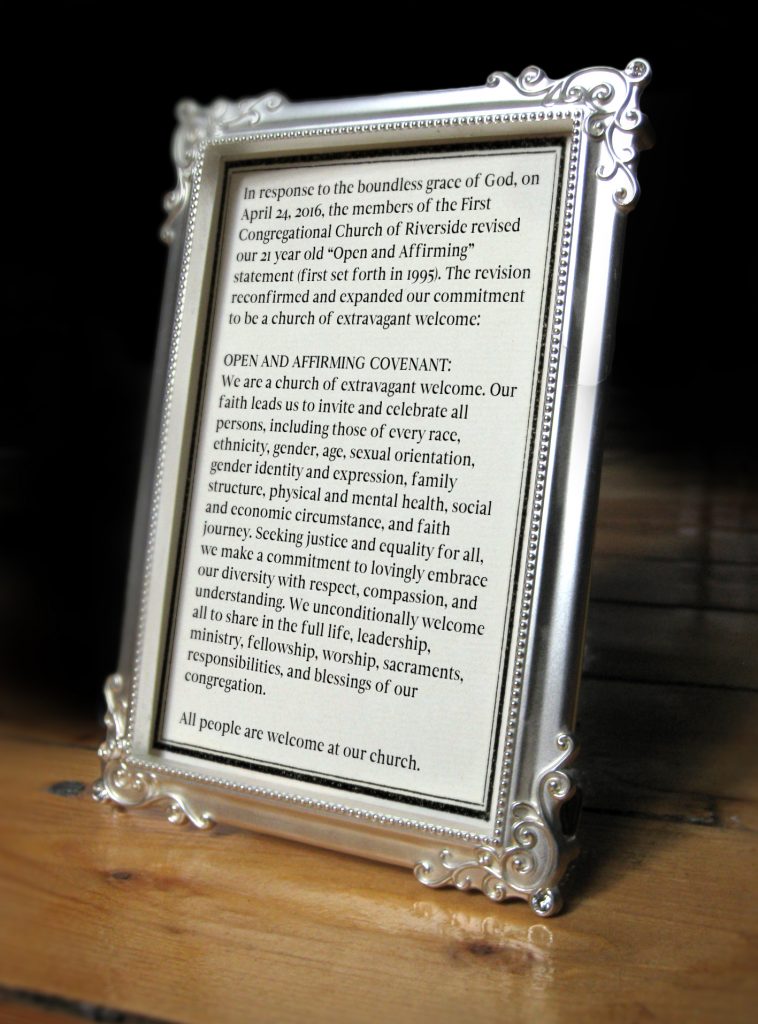The First Congregational Church was founded on April 21, 1872, shortly after the founding of the City of Riverside, when a few of the early settlers banded together and became the first organized church in Riverside. The following year, they constructed the first church building. Since it was constructed with community-wide support and also served other faiths, it was called the First Church of Christ in Riverside. In 1887, the Congregationalists moved to the present site and constructed a wooden Gothic-style church.

Some Memorable Dates:
April 21, 1872
Founding of the church.
March 23, 1873
First church building dedicated, Sixth and Vine.
June 12, 1887
Second church building dedicated, Seventh and Lemon.
December 1, 1912
Laying of cornerstone for new church.
January 25, 1914
Dedication of the present building.
It is one of the most significant Spanish Revival structures existing in Southern California. It was designed by Myron Hunt, a leading California architect who also designed the Spanish Wing of the Mission Inn and the Rose Bowl in Pasadena. The building is a brick structure with a concrete tower. Henry Jekel was the architectural engineer for the Spanish Baroque Churrigueresque tower.
April 17, 1927
The Baptismal Font
The baptismal font is one of the unique furnishings of the church. It was carved from American Walnut by Richard Lippich of Lancaster, New York, a Swiss carver who had just arrived in the United States. The inscription on the font reads, “In memory of one from the east who worshiped in this church.” It was given by Mr. C.C. Childs as a memorial for his wife and installed on Easter 1927.
December, 1941
Pilgrim Hall and kitchen leased to U.S. Government for use during World War II.
April 20, 1947
Seventy-fifth Anniversary Celebration, and dedication of memorial stained glass windows.
Around the upper level of the sanctuary are eight stained glass windows. The first four of these windows were donated in the 1940’s by an anonymous couple staying at the Mission Inn, and the four others were donated later. The windows were designed by Horace Judson and made by the Judson Studios of Los Angeles. Five windows were dedicated April 4, 1947; three more were dedicated November 20, 1955. The eight windows represent: The Nativity; Christ in the Temple; The Baptism; Christ Blessing the Children; The Light of the World; Prayer; Communion; and the Woman of Samaria. The Sistine Madonna Window, also a Judson Studio Creation, was the first stained glass in the church (1916). The Window was restored and dedicated in April 1997 in celebration of the 125th anniversary of the founding of the church.
April 9, 1950
Dedication of the Great Cross
It is made of 23 enamel on copper panels depicting some of the ideas central to the beliefs of the church. It was given by Mr. and Mrs. Dominic Tavaglione in memory of her mother, Pearl Parker, and her brother, George A. Parker. The idea of the cross was conceived by Millard Sheets, world-renowned artist from Claremont, and it was designed by Margaret Montgomery, later Mrs. Jarvis Barlow, in the art department of Scripps College.
March 22, 1959
Dedication of Austin pipe organ.
The organ was designed by Robert G. Derick, organist and choirmaster in the church from 1949 to 1965. It is a 38-rank, three manual pipe with 2,292 pipes, made by the Austin Organ Company of Hartford, Connecticut.
February, 1970
Plymouth Tower, a facility for seniors established by the Church and the Retirement Housing Foundation, open for occupancy. (Later became a private facility no longer associated with FCC.)
1984
“Project: Food“, a meal program for the homeless, began.
October 1, 1989
Carillon installed in the Tower.
For many years the church’s 135′ bell tower was empty. in 1986, Don and Beth Miller began the Carillon Project in memory of their son, Scott. A Carillon was chosen, consisting of 24 bells, each of which rings a different pitch on the chromatic scale. The bells, which are the only pealing bells located in Southern California, were manufactured in France.
March 19, 1995
Became an “open and affirming” congregation, affirming the dignity and worth of all races, ethnicities, ages, abilities, genders, and sexual orientations.
1996
The FCC Madonna
The stained glass window was an FCC Sunday School project in the 1890’s when children donated pennies for 15 years. It was modeled after the Sistine Madonna (or Madonna di San Sisto oil painting) which was used as an altarpeice at the church of San Sistoin Piacenza, Italy. Although the original included Saints Sixtus and Barbara and cherubs at Mary’s feet, this version is true to Raphael Sanzio’s original painted in 1513-14. The facial expressions reflect the painting’s original placement near a crucifix. This is an excellent example of High Renaissance art and was the only stained glass in this building until 1947 when five memorial stained glass windows were installed in the sanctuary. It originally hung on the north wall but was removed during the remodel of the church in 1955. In 1996 it was removed from storage, restored and installed with love in this display box.
April 24, 2016
Open and affirming statement revised and expanded.
We are a church of extravagant welcome. Our faith leads us to invite and celebrate all persons, including those of every race, ethnicity, gender, age, sexual orientation, gender identity and expression, family structure, physical and mental health, social and economic circumstance, and faith journey. Seeking justice and equality for all, we make a commitment to lovingly embrace our diversity with respect, compassion, and understanding. We unconditionally welcome all to share in the full life, leadership, ministry, fellowship, worship, sacraments, responsibilities, and blessings of our congregation.

